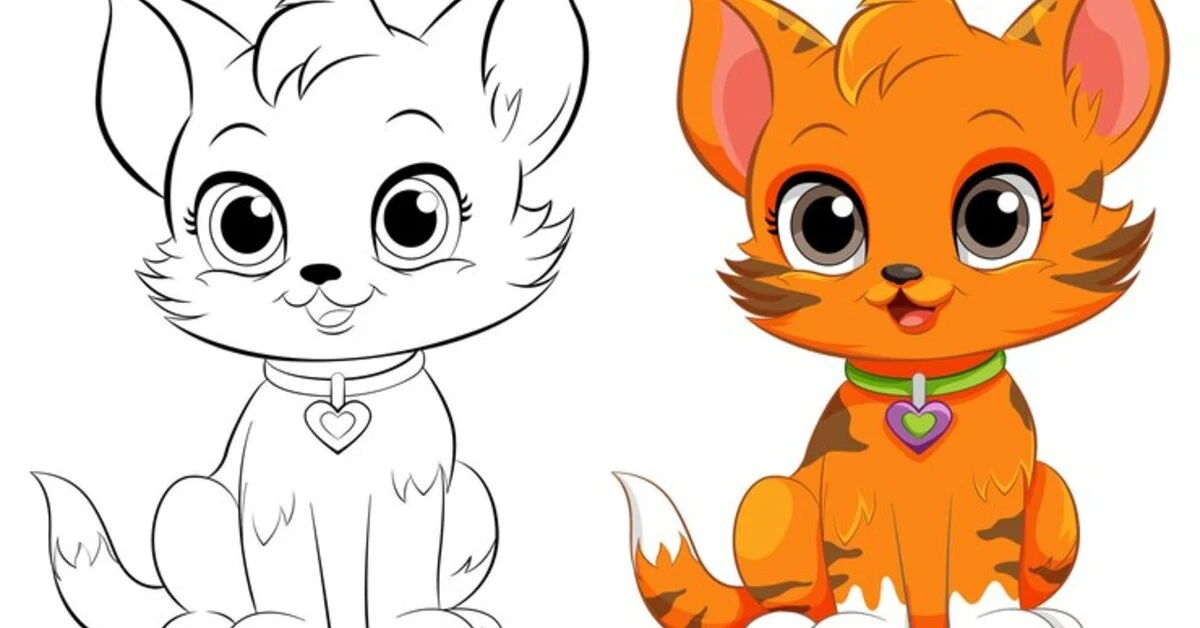The Art of drawing:a4z_-ymtkr8= cat A Deep Dive into A4Z_-YMTKR8
drawing:a4z_-ymtkr8= cat is an age-old practice that transcends cultures and generations. Among the myriad subjects that artists choose to depict, cats have carved out a special niche. Their whimsical poses, intricate fur patterns, and captivating eyes make them irresistible subjects for artists at every skill level. In this article, we will explore the fascinating world of cat drawing, with a particular focus on the unique style represented by the keyword “A4Z_-YMTKR8.” Let’s dive in!
The Allure of Cats in Art
A Timeless Subject
drawing:a4z_-ymtkr8= cat have been part of human civilization for thousands of years, serving various roles from beloved companions to revered figures in mythology and religion. In ancient Egypt, cats were seen as sacred animals, embodying grace and mystery. Their portrayal in art has evolved over the centuries, reflecting cultural changes and artistic movements. From Renaissance paintings to modern digital art, cats have consistently fascinated artists and viewers alike.
A Reflection of Personality
When it comes to cat, capturing their personality is often the primary goal. Every cat has its unique quirks and expressions, from the aloof stare of a Persian to the playful pounce of a Bengal. Artists often find joy in these idiosyncrasies, using them to convey deeper emotions or narratives within their work. The ability to depict a cat’s personality is what often distinguishes a novice artist from a more seasoned one.
The Connection Between Artist and Subject

drawing:a4z_-ymtkr8= cat a isn’t just about replicating its form; it’s about forging a connection with the subject. For many artists, their pets serve as models. This intimate relationship allows for a more profound understanding of the animal’s behavior and character. When an artist has a genuine connection with their subject, the resulting artwork often radiates authenticity and emotion.
Understanding the Basics of Cat Anatomy
The Feline Form
To create a convincing cat drawing:a4z_-ymtkr8= cat, it’s essential to understand the feline anatomy. Cats have a unique skeletal structure that contributes to their agility and grace. Their elongated spine, flexible joints, and retractable claws allow for impressive acrobatics. When drawing a cat, pay close attention to these physical characteristics to ensure accurate proportions.
Observing Movement
Cats are known for their fluid movements, and capturing this dynamism in a drawing:a4z_-ymtkr8= cat can be challenging yet rewarding. Artists should observe how cats move, whether they’re stalking prey or simply lounging in the sun. Understanding their center of gravity and balance will aid in creating more lifelike poses. Drawing from life or watching videos of cats can enhance your ability to depict their motion effectively.
Facial Features and Expressions
The face of a cat can convey a wide range of emotions. From curiosity to annoyance, a cat’s expression can change in an instant. Focus on the eyes, ears, and mouth when drawing:a4z_-ymtkr8= cat; these features often reveal a cat’s mood. Pay attention to the slight changes in their posture and expression—these nuances can significantly impact the overall portrayal.
Techniques for drawing:a4z_-ymtkr8= cat Cats
Sketching Basics
Before diving into detailed work, start with simple sketches. Begin with basic shapes to outline the body structure. Use circles for the head and body, and lines for the limbs and tail. This foundational step helps establish proportions and ensures that the overall composition feels balanced.
Shading and Texture
One of the most rewarding aspects of drawing:a4z_-ymtkr8= cat is capturing their fur texture. Different breeds have distinct fur types, from the soft, fluffy coats of Ragdolls to the sleek, short fur of Siamese cats. Use varied pencil strokes to convey different textures, and experiment with shading techniques to add depth and dimension to your drawing.
Incorporating Background Elements
While the cat is the focal point, incorporating background elements can enhance the overall composition. Whether it’s a cozy home environment or a natural outdoor setting, the background can provide context and tell a story. Make sure the background complements the cat without overwhelming it.
drawing:a4z_-ymtkr8= cat in Different Styles
Realism
Realistic drawing:a4z_-ymtkr8= cat require a keen eye for detail. Artists often spend hours observing their subjects to capture the nuances of fur, color variations, and unique markings. Utilizing techniques like cross-hatching and blending can create a lifelike appearance. The goal is to evoke the sense of actually being in the presence of the cat.
Cartoon Style
For those looking to add a fun twist to their drawing:a4z_-ymtkr8= cat, a cartoon style can be an excellent option. Exaggerating features like large eyes and oversized paws can create a playful aesthetic. This style allows for greater creative freedom, enabling artists to inject their personality into the work. Cartoon cats can be expressive and whimsical, appealing to a wide audience.
Abstract Interpretations
Abstract art opens up endless possibilities when drawing:a4z_-ymtkr8= cat. Artists can play with shapes, colors, and forms to create unique representations of felines. This style encourages experimentation and allows for the expression of emotions and concepts that might be difficult to convey through realistic art.
Tools of the Trade
Choosing the Right Medium
The choice of medium can significantly influence the outcome of your drawing:a4z_-ymtkr8= cat. Pencils are a popular choice for their versatility and ease of use. Graphite pencils allow for fine detail work, while charcoal can create dramatic contrasts. Markers and colored pencils can add vibrancy and life to your drawings.
Paper Selection
The type of paper used can also affect the final piece. Smooth paper is ideal for detailed work, while textured paper can add depth to sketches. Experimenting with different paper types can lead to discovering what best suits your style and technique.
Digital drawing:a4z_-ymtkr8= cat
With the rise of technology, many artists are turning to digital platforms to create their art. Programs like Procreate and Adobe Illustrator offer a range of tools that can simplify the drawing:a4z_-ymtkr8= cat process. Digital art also allows for easy corrections and modifications, making it an appealing option for many contemporary artists.
Inspiring Cat Artists and Their Work
Renowned Artists
Throughout history, many artists have made significant contributions to cat art. Take, for example, Leonardo da Vinci, who often sketched cats in his notebooks, capturing their essence and grace. More recently, contemporary artists like Charles Wysocki have created iconic cat-themed paintings that resonate with viewers.
Online Influencers
In today’s digital age, numerous artists share their cat-themed work on platforms like Instagram and TikTok. These artists inspire a new generation of creators and often provide valuable tutorials and tips. Following their work can spark creativity and encourage budding artists to explore their style.
Community Engagement
Art communities, both online and offline, are invaluable for artists. Sharing drawing:a4z_-ymtkr8= cat in these spaces can lead to constructive feedback and inspiration. Engaging with fellow artists can foster a sense of belonging and encourage personal growth.
The Role of Cats in Pop Culture
Cats in Literature
Cats have been beloved characters in literature for centuries. From the Cheshire Cat in Lewis Carroll’s “Alice’s Adventures in Wonderland” to the mischievous feline in T.S. Eliot’s “Old Possum’s Book of Practical Cats,” their representation in literature often reflects their mysterious nature and the unique bond they share with humans. These literary references add layers of meaning and context for artists drawing:a4z_-ymtkr8= cat.
Cats in Film and Animation
Cats have also made their mark in the world of film and animation. Iconic characters like Garfield and the Aristocats showcase the diverse personalities that felines can embody. The animation of these characters inspires artists to explore various styles and storytelling techniques, offering a fresh perspective on cat drawing:a4z_-ymtkr8= cat.
Cats in Fashion and Design
The influence of cats extends beyond traditional art forms into fashion and design. Cat motifs are often seen in clothing, accessories, and home decor, reflecting their popularity in contemporary culture. Designers frequently draw inspiration from cat characteristics, making them a stylish element in various collections.
Developing Your Unique Style
Finding Your Voice
As you explore the art of drawing:a4z_-ymtkr8= cat, take time to discover your unique style. Experimenting with different techniques and approaches can help you find what resonates most with you. Don’t be afraid to blend styles or push boundaries—art is all about exploration!
Creating a Portfolio
Building a portfolio of your drawing:a4z_-ymtkr8= cat can be a rewarding endeavor. This collection not only showcases your progress but also serves as a source of inspiration. Include pieces that represent different styles and techniques, and don’t shy away from including unfinished work; it’s all part of the creative journey.
Sharing Your Art
In today’s interconnected world, sharing your art has never been easier. Utilize social media platforms to showcase your drawing:a4z_-ymtkr8= cat and engage with a broader audience. Consider starting a blog or a YouTube channel to share your drawing process and connect with fellow cat enthusiasts.
Tips for Success in drawing:a4z_-ymtkr8= cat
Practice Makes Perfect
As with any art form, practice is crucial. Set aside time to draw regularly, focusing on different aspects of feline anatomy, movement, and expression. The more you draw, the more you’ll improve.
Use Reference Photos
Utilizing reference photos can be incredibly helpful, especially for beginners. These images provide a guideline for proportions, fur textures, and expressions. Over time, as your skills develop, you may find it easier to draw from memory.
Seek Feedback
Don’t hesitate to seek constructive criticism from fellow artists or mentors. Feedback can provide valuable insights and help you identify areas for improvement. Engaging in art communities, whether online or offline, can facilitate this exchange.
Conclusion
The journey of drawing:a4z_-ymtkr8= cat, particularly with the unique perspective offered by the concept of “A4Z_-YMTKR8,” is both challenging and rewarding. Cats are not just subjects; they embody emotions, stories, and experiences. By understanding their anatomy, exploring various styles, and honing your skills, you can create captivating feline artwork that resonates with viewers. So grab your pencils, embrace your creativity, and let the enchanting world of cats inspire your next masterpiece!



